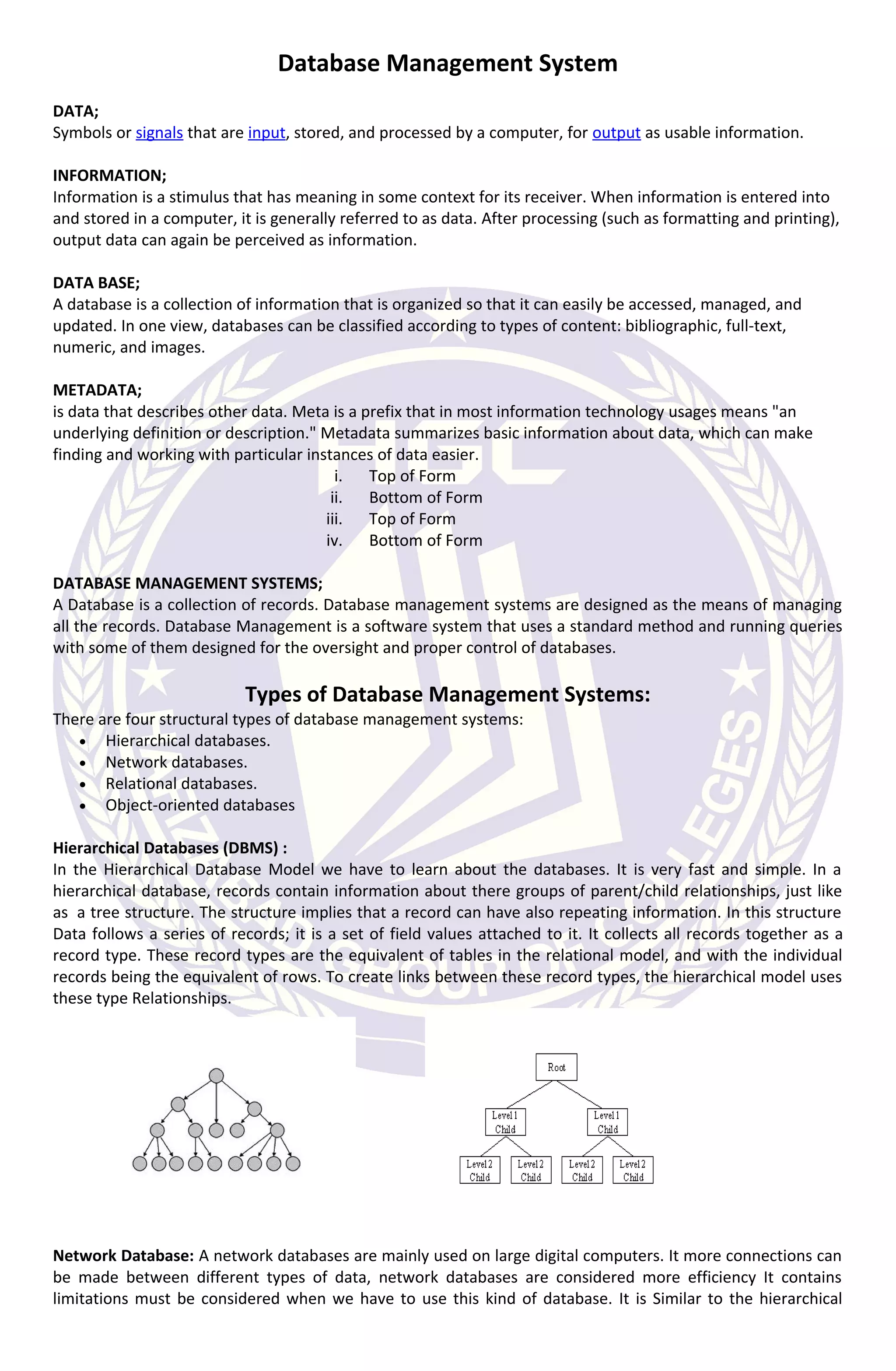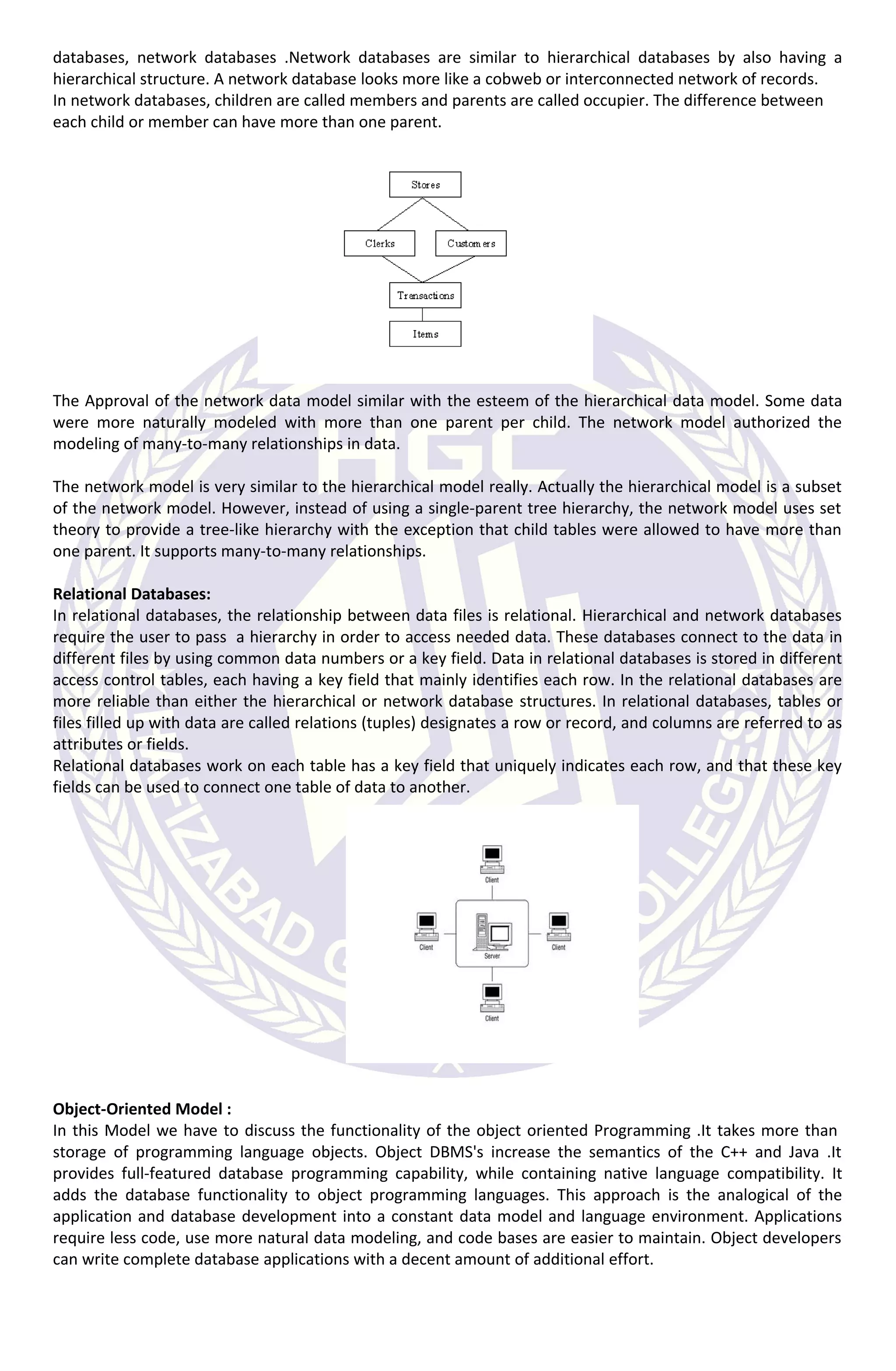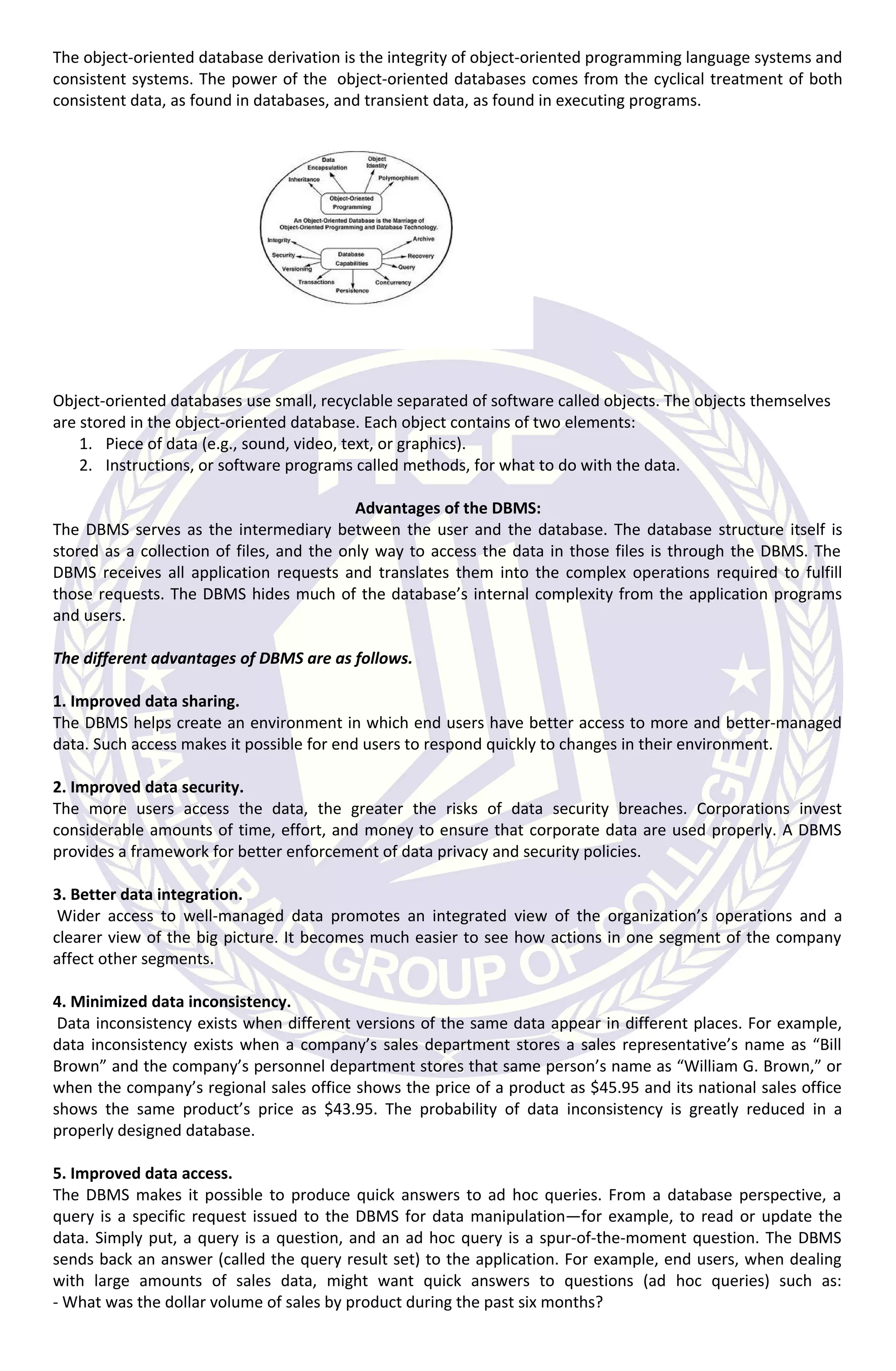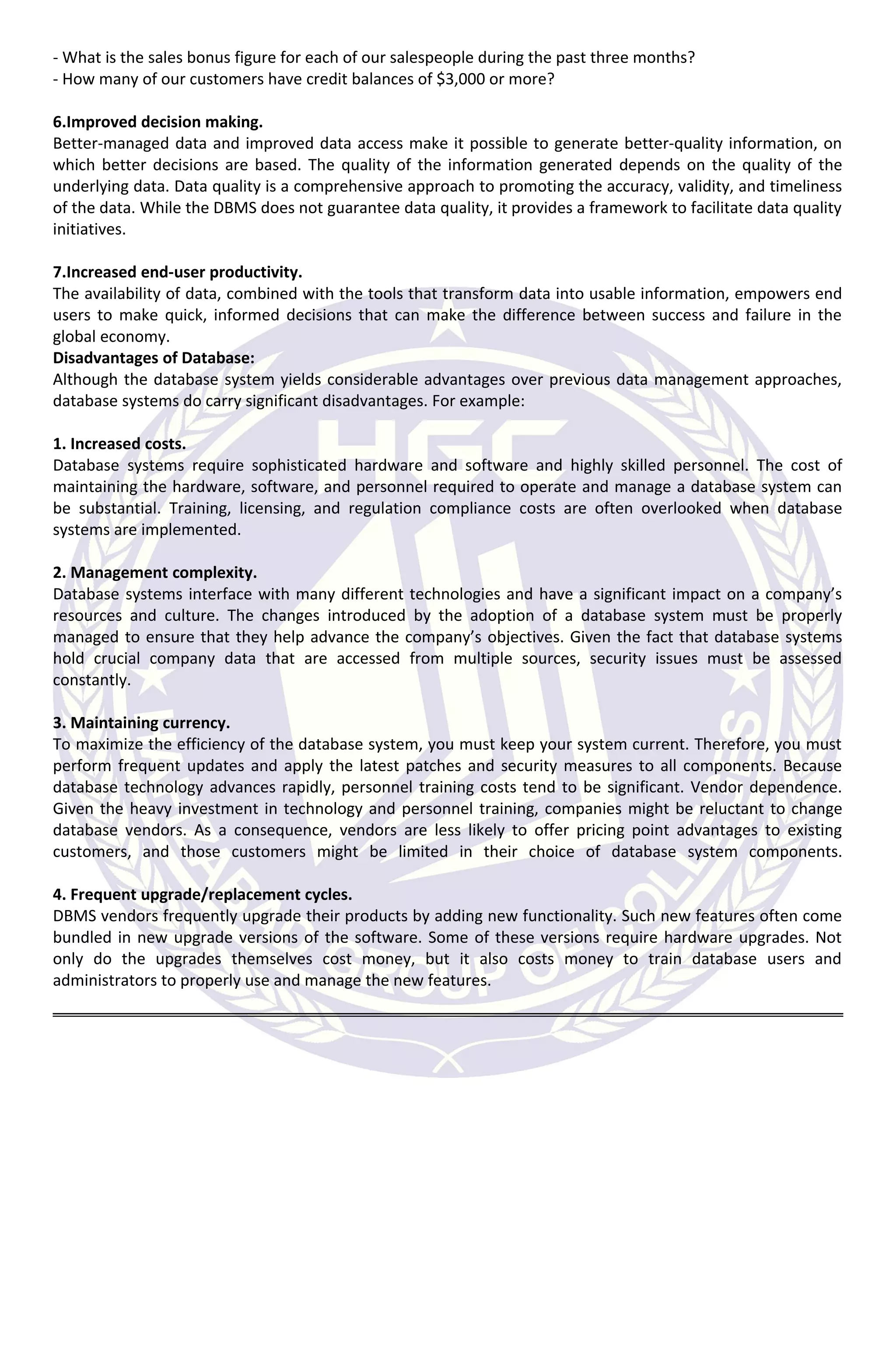A database management system (DBMS) is a software system that is used to create and manage databases. It allows users to define, create, maintain and control access to the database. There are four main types of DBMS: hierarchical, network, relational and object-oriented. A DBMS provides advantages like improved data sharing, security and integration. It also enables better access to data and decision making. However, DBMS also have disadvantages such as increased costs, management complexity and the need to constantly maintain and upgrade the system.



